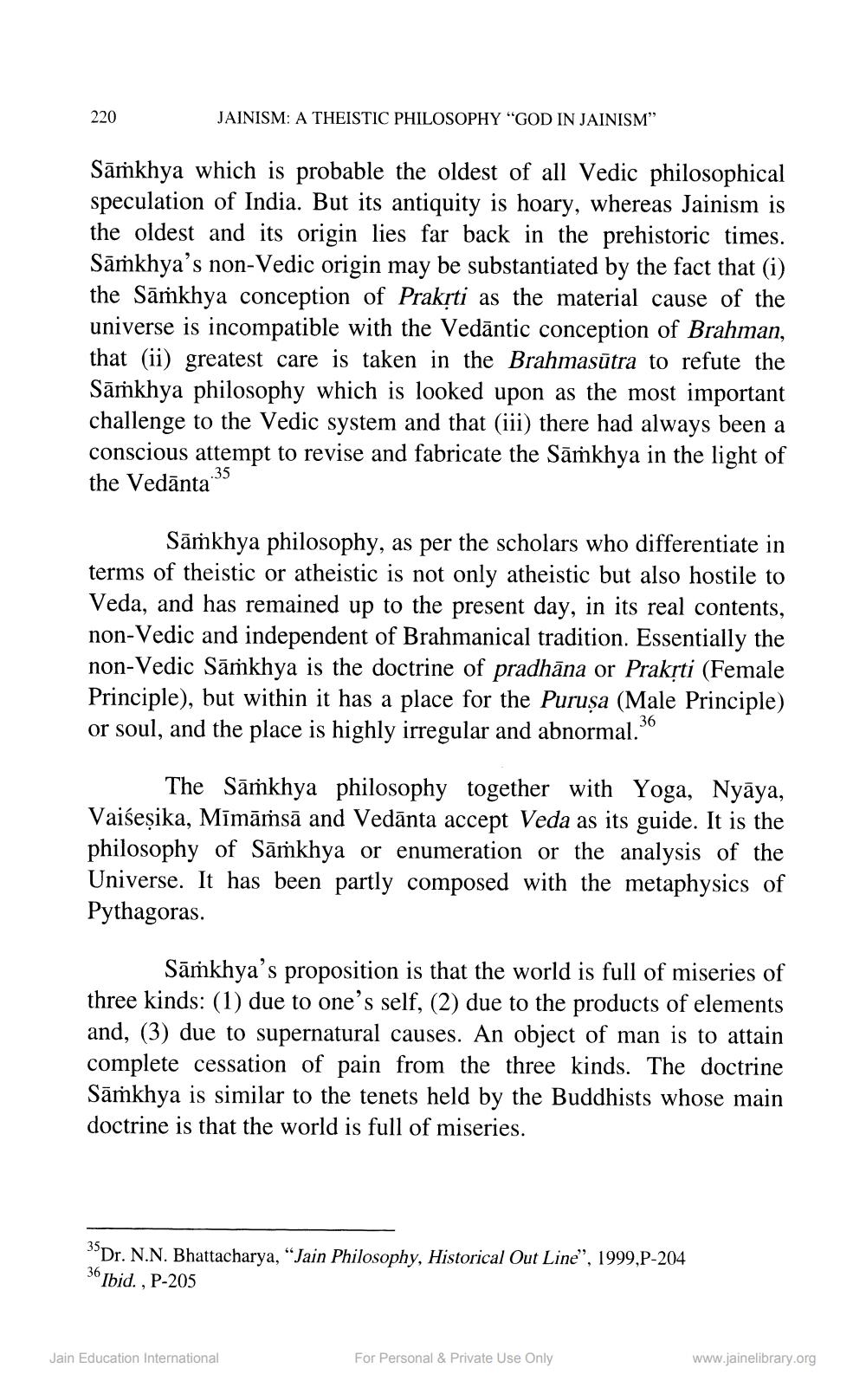________________
220
JAINISM: A THEISTIC PHILOSOPHY "GOD IN JAINISM"
Sāṁkhya which is probable the oldest of all Vedic philosophical speculation of India. But its antiquity is hoary, whereas Jainism is the oldest and its origin lies far back in the prehistoric times. Sāṁkhya's non-Vedic origin may be substantiated by the fact that (i) the Sāṁkhya conception of Prakrti as the material cause of the universe is incompatible with the Vedāntic conception of Brahman, that (ii) greatest care is taken in the Brahmasūtra to refute the Sāmkhya philosophy which is looked upon as the most important challenge to the Vedic system and that (iii) there had always been a conscious attempt to revise and fabricate the Sāṁkhya in the light of the Vedānta:35
Sāṁkhya philosophy, as per the scholars who differentiate in terms of theistic or atheistic is not only atheistic but also hostile to Veda, and has remained up to the present day, in its real contents, non-Vedic and independent of Brahmanical tradition. Essentially the non-Vedic Sāṁkhya is the doctrine of pradhāna or Prakrti (Female Principle), but within it has a place for the Purușa (Male Principle) or soul, and the place is highly irregular and abnormal. 36
The Sāṁkhya philosophy together with Yoga, Nyāya, Vaišeșika, Mīmāṁsā and Vedānta accept Veda as its guide. It is the philosophy of Sāṁkhya or enumeration or the analysis of the Universe. It has been partly composed with the metaphysics of Pythagoras.
Sāṁkhya's proposition is that the world is full of miseries of three kinds: (1) due to one's self, (2) due to the products of elements and, (3) due to supernatural causes. An object of man is to attain complete cessation of pain from the three kinds. The doctrine Sāṁkhya is similar to the tenets held by the Buddhists whose main doctrine is that the world is full of miseries.
Dr. N.N. Bhattacharya, "Jain Philosophy, Historical Out Line”, 1999.P-204 36 Ibid. P-205
Jain Education International
For Personal & Private Use Only
www.jainelibrary.org




